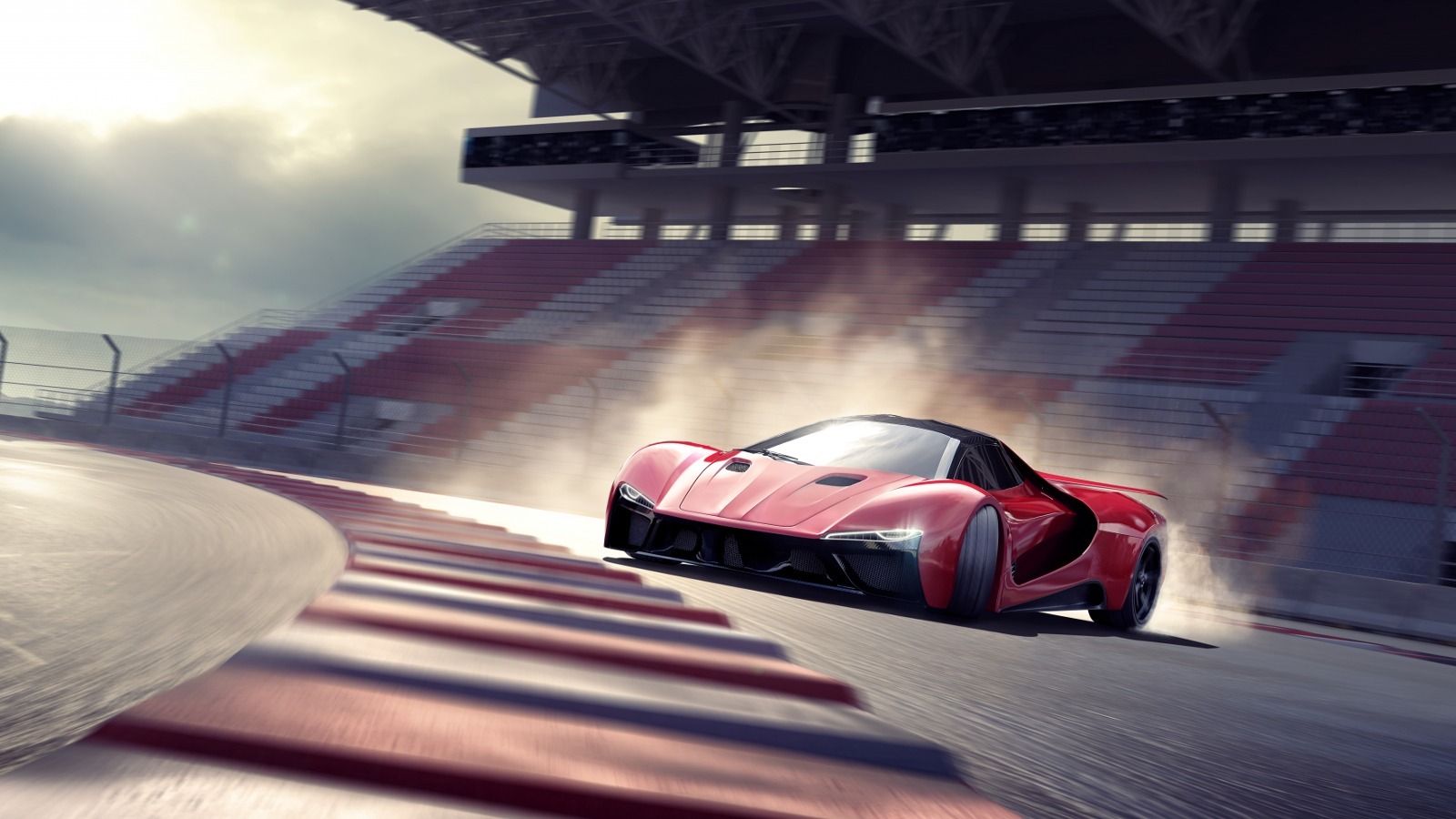Oversteer is a dynamic vehicle behavior that occurs when the rear tires lose grip before the front tires during cornering. This leads to the car’s rear swinging outward, a situation often described as “the back coming out.” While potentially hazardous, oversteer can be controlled and even exploited in specific scenarios, such as drifting—a technique where sustained oversteer is intentionally maintained.
Key Stages of Oversteer
Oversteer unfolds through four identifiable stages, each critical to understanding how to manage and correct the phenomenon effectively:
1. Initial Turn-In
The vehicle begins the turn with normal traction and aims for the corner apex. At this stage, all tires maintain adhesion.
2. Rear Wheel Slip
The rear wheels begin to lose grip, causing the car’s rear to swing outward. The driver counteracts this by steering in the direction of the slide (counter-steering) to maintain alignment with the desired driving line.
3. Controlled Slide
If managed correctly, the car can stay on its intended path, and the driver retains control while taking the corner.
4. Critical Threshold
The car reaches the maximum counter-steering lock. Beyond this point, regaining control becomes difficult, and a spin is likely without swift, accurate corrections.

Causes and Contributing Factors
Oversteer can result from intrinsic vehicle characteristics or specific driver actions, categorized as follows:
Passive Factors (Vehicle Characteristics)
- Weight Distribution: Rear-heavy vehicles are more prone to oversteer.
- Engine and Drivetrain Layout: Rear-wheel drive and mid/rear-engine layouts often predispose vehicles to oversteer.
- Suspension and Chassis Setup: Stiffer rear suspensions or less rear downforce can amplify oversteer tendencies.
- Tire Type and Condition: Worn, underinflated, or mismatched tires at the rear reduce grip.
Active Factors (Driver Inputs)
- Cornering Speed: Excessive speed increases the likelihood of rear tire slip.
- Throttle Application: Early or aggressive acceleration reduces rear traction.
- Braking: Abrupt braking mid-corner disrupts balance and can induce oversteer.
- Steering Inputs: Sudden or excessive steering adjustments destabilize the car.
- Weight Transfer: Shifts in weight during deceleration or directional changes affect grip distribution.
Recognizing Oversteer
To effectively respond to oversteer, it is crucial to recognize its symptoms:
- Rear Instability: The back of the vehicle feels “light” or unstable.
- Vehicle Rotation: The car begins to pivot toward the inside of the corner.
Scenarios Leading to Oversteer
| Cause | Likelihood of Oversteer |
|---|---|
| Excessive Cornering Speed | High |
| Early or Aggressive Throttle | High |
| Throttle Lift Mid-Corner | Medium to High |
| Braking During Cornering | Medium |
Correcting Oversteer
Managing oversteer requires swift and precise actions to regain control:
Counter-Steering
Turn the steering wheel in the direction of the slide to align the front wheels with the intended path.
Throttle Adjustment
- Reapply Throttle: In some cases, accelerating can redistribute weight and restore rear traction.
- Ease Off Throttle: Gradually reducing throttle input can stabilize the car without further destabilizing it.
Smooth Inputs
Abrupt braking or harsh steering can exacerbate oversteer. Instead, prioritize progressive, measured adjustments.

Oversteer in Different Drivetrain Configurations
Oversteer characteristics vary significantly across drivetrain and engine layouts:
Rear-Wheel Drive (RWD)
RWD vehicles distribute driving forces between the front (steering) and rear (power delivery) wheels. Oversteer in RWD cars depends on engine placement:
| Cause of Oversteer | Likelihood (Front Engine) | Likelihood (Rear Engine) |
|---|---|---|
| Entering the Corner Too Fast | High | High |
| Accelerating Aggressively | High | Medium |
| Throttle Lift Mid-Corner | Medium | High |
| Braking During Cornering | Medium | High |
Front-Wheel Drive (FWD)
Oversteer in FWD cars, such as the Peugeot 205 GTi, is less common due to inherent understeer tendencies. However, weight transfer from throttle lift or abrupt braking can cause the rear to lose grip.
| Cause of Oversteer | Likelihood |
|---|---|
| Entering the Corner Too Fast | Low (Understeer Likely) |
| Accelerating Aggressively | Low |
| Throttle Lift Mid-Corner | High |
| Braking During Cornering | High |
Four-Wheel Drive (4WD)
4WD cars, like the Subaru Impreza, share traction demands across all wheels, reducing the risk of oversteer. However, powerful 4WD systems can still encounter slides under certain conditions.
| Cause of Oversteer | Likelihood |
|---|---|
| Entering the Corner Too Fast | Medium |
| Accelerating Aggressively | Medium to High |
| Throttle Lift Mid-Corner | Medium |
| Braking During Cornering | Medium |
Special Oversteer Phenomenon: Lift-Off Oversteer
Lift-off oversteer occurs when throttle is reduced mid-corner, transferring weight forward. This shift increases front grip but reduces rear traction, causing the rear to slide outward. This is particularly common in FWD cars with light rear ends.
| Steps to Correct Lift-Off Oversteer |
|---|
| 1. Reapply Throttle: Regain rear traction by accelerating. |
| 2. Counter-Steer: Align wheels with the desired direction. |
Preventing Oversteer
Reducing oversteer tendencies is crucial for safe and consistent vehicle handling, particularly on the track. Consider the following adjustments:
Simple Modifications
- Lower rear tire pressure for increased grip.
- Soften rear suspension or anti-roll bars.
- Use softer rear tires for better adhesion.
- Enhance rear downforce through aerodynamic improvements.
Advanced Adjustments
- Optimize weight distribution for better balance.
- Adjust suspension geometry for neutral handling.
Oversteer is both a challenge and an exhilarating aspect of high-performance driving. Mastering its causes, recognition, and correction techniques ensures a safer and more enjoyable driving experience. Whether you’re on a track or simply seeking a deeper understanding of vehicle dynamics, practicing oversteer management can significantly improve your driving confidence and skill. Always prioritize safety, practice in controlled environments, and respect the limits of your vehicle.

